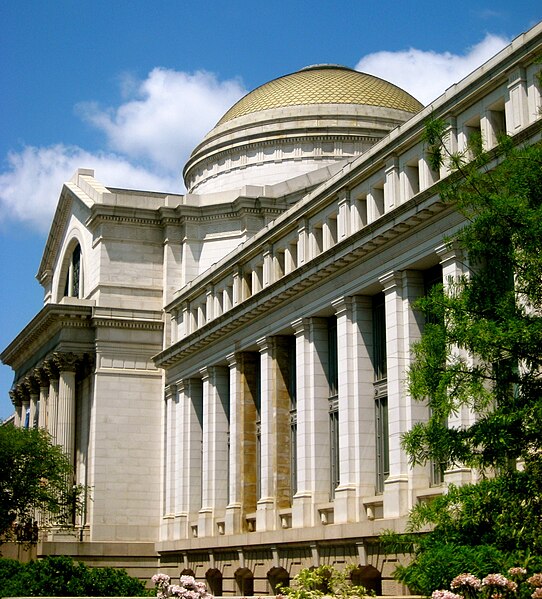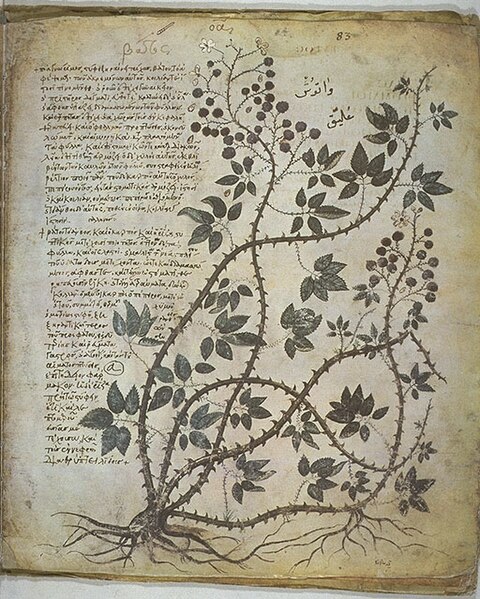A natural history museum or museum of natural history is a scientific institution with natural history collections that include current and historical records of animals, plants, fungi, ecosystems, geology, paleontology, climatology, and more.
The Smithsonian Museum of Natural History, the largest natural history museum in the world
Skeletons of Shunosaurus (left) and Giganotosaurus (right) in the Finnish Museum of Natural History in Helsinki, Finland
Natural history is a domain of inquiry involving organisms, including animals, fungi, and plants, in their natural environment, leaning more towards observational than experimental methods of study. A person who studies natural history is called a naturalist or natural historian.
Black and white tables of natural history, from Ephraim Chambers's 1728 Cyclopaedia.
A natural history collection in a French public secondary school
Blackberry from the sixth-century Vienna Dioscurides manuscript
Georges Buffon is best remembered for his Histoire naturelle, a 44-volume encyclopedia describing quadrupeds, birds, minerals, and some science and technology. Reptiles and fish were covered in supplements by Bernard Germain de Lacépède.






